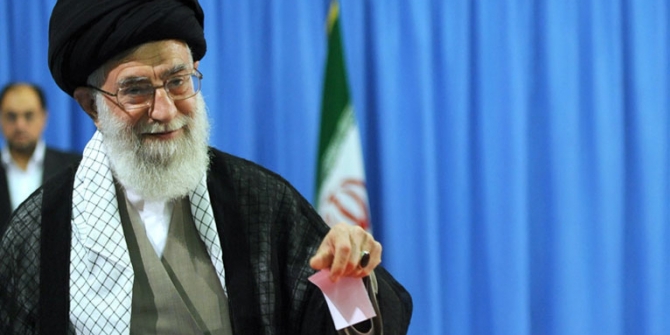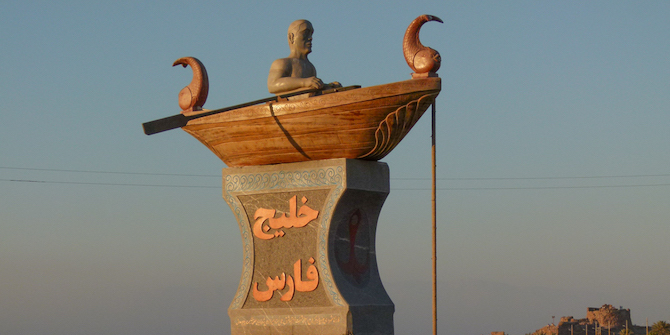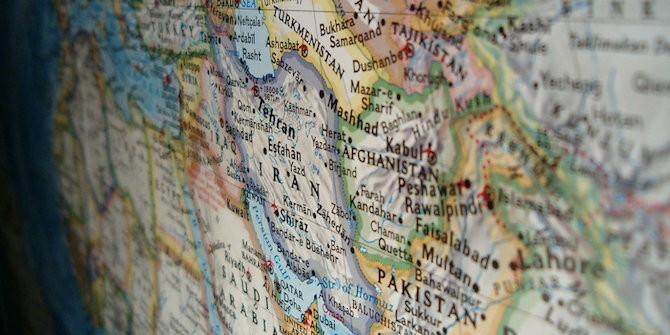by Marouf Cabi
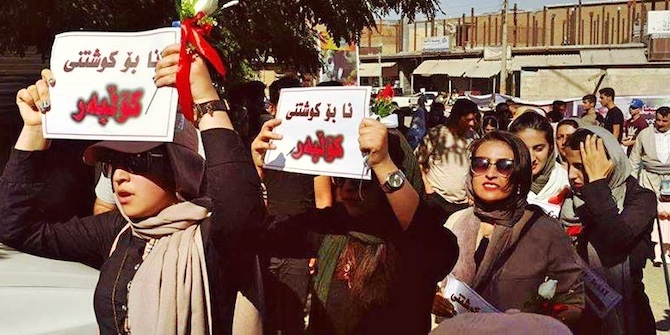
Iran has experienced a new phase in the expansion of civil society organisations and movements since the end of the 1990s. This blog focuses on Iranian or Rozhhelat-i Kurdistan in the context of militarisation and the armed presence of the Kurdish political parties, serving to introduce the author’s ongoing study on this subject, which aims to highlight the importance of this development in a society which defines itself in relation to authoritarianism and ethnic oppression in Iran. I argue that the expansion of civil society simultaneously guarantees social transformation and strengthens the struggle for the political and cultural rights of the Kurds.
The final editing of this blog coincided with the current uprising in Iran. The study can help readers to understand the reasons behind the uprising’s level of organisation and persistence. Regarding Iranian Kurdistan, the breadth of the movement and its radical ideas surprised especially those who considered Iranian Kurdistan a ‘dormant’ society or politically passive because of a dual identity – Kurdish and Iranian. The roots of the uprising can be seen in a long history of resistance, but crucially also the last two decades, characterised by the expansion of civil society organisations and movements.
The study is important for two reasons. First, as the most ethnically politicised part of Iran, an armed struggle has not been the only characteristic of the country’s Kurdish movement. The absence of an active armed struggle in the last two decades has made the Kurdish experience less visible compared to other neighbouring Kurdish movements in the region. Second, civil society’s current unprecedented extent and capacity should be interpreted on its own terms, not as complementary to armed struggle.
Civil Society in a Kurdish Context
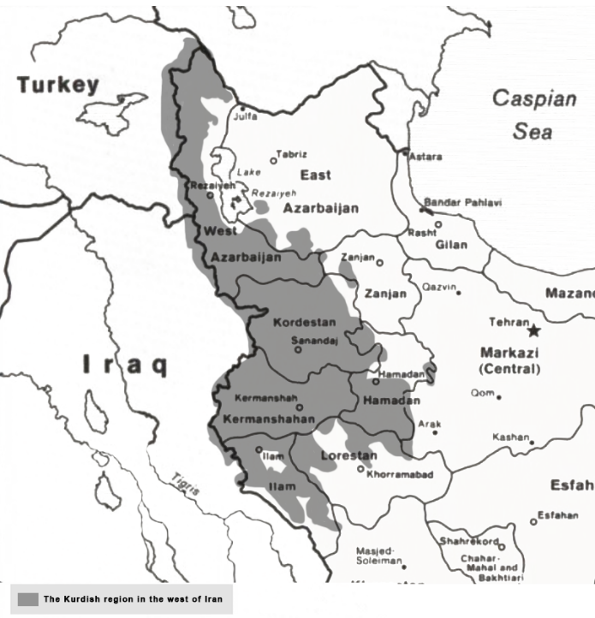
Classical theorists initiated or contributed to coining the concept of civil society, while, more recently, scholars have redefined it to better suit different situations and contexts. In light of this recent research, this study follows a definition which can be translated into the cultural, social and political context of Iran and its ethnic structures. The concept is taken to mean the social sphere, independent of the state and other political actors. This is a crucial point as, in our case, social organisations have emerged independent of the state, on the one hand, and attempt to remain so in relation to the Kurdish parties despite their support for social movements, on the other.
As components of civil society, to borrow from Melody Mohebi, social movements in Iran are seen as sites of struggle and resistance. However, the movements assume other, regional characteristics when expanding into more politically and ethnically charged contexts; in this respect, no other parts of Iran can be compared to Kurdistan. Additionally, civil society in Iran is naturally impacted by the international context, in which competing economic, cultural and environmental trends shape people’s perceptions of the world and their lives in different ways. As an illustration of this, environmental, literary, and women’s organisations, in addition to the active interactions of academics with their respective disciplines worldwide, regularly engage with issues which transcend locality. To assess social movements in Iranian Kurdistan, the study focuses on voluntary organisations as the foundations for the continuity and effectiveness of social movements. Another significant question in both Iranian and Kurdish contexts is how movements deal with authoritarianism and the necessary strategies they must employ to survive its constraints.
Historical Overview
Following the triumph of the 1979 Revolution, various forms of unions and societies emerged in Iranian Kurdistan concurrently with the establishment of a democratic form of limited self-rule. The remilitarisation of Kurdistan in the spring of 1980 by the new regime, which had rejected the Kurds’ demand for autonomy within the framework of the Iranian state, terminated this democratic experience. Consequently, to defend the Kurds’ political and cultural rights, armed struggle became the primary and most attractive form of resistance, which continued intensely for the next decade, and in other forms since the 1990s. However, social and cultural activism resurfaced in new circumstances or continued in less overt forms.
The situation has drastically changed in Iran and Iranian Kurdistan since the 1997 presidential election, in which the reformist faction won a landslide victory over the hardliners, resulting in a controlled political opening. Despite the failure of the reformists in the years that followed, social movements continued to multiply and diversify in various forms. Domestically, political and economic crises and social conditions shape the ideologies of the movements. The political developments since the early 2000s, in addition to global migration, worldwide social interactions and the spread of the internet have shaped regional and international contexts.

Regarding social organisations and protest movements, Iranian Kurdistan has been a notable part of this general trend. This is a remarkable achievement, given the Kurds’ continuous experience of political oppression and militarisation. The persistence of the current uprising since the death of Mahsa Zhina Amini has owed itself to a high level of organisation which would not have been possible in the absence of a strong civil society. Furthermore, the leading ideas of the uprising and its motto – Woman, Life, Freedom – demonstrate an intellectualism born of the expansion of higher education institutions over the last two decades. Significantly, the independent role of civil society organisations in the Zhina uprising rejected any militant project to reinvigorate the Kurdish movement. For example, discussed in a scholarly article, certain Kurdish parties attempted to link the civil society movements to armed struggle in a project in which the latter had the leading role.
The study in question relies on official and unofficial data in addition to qualitative research (including text analysis and themes and patterns interpretation) on the subject, exploring the expansion and meaning of civil society in an authoritarian context and explaining it as a generative space for democratisation capacity. The study also uses a comparative approach to analyse civil society in Iran and several other countries of the region in relation to their Kurdish regions. The methods address the following research questions: (1) can Kurdish social movements under authoritarianism serve democratisation?; and (2) do such movements have the potential to become the alternative to violent resistance to the state’s political and national/ethnic oppression of the Kurds?
The first issue researchers encounter in generating data is Iran’s administrative divisions. Iran’s administrative policies have historically reflected the increase in the population and the need for effective governance; however, they gradually became more ideologically oriented toward the management of minority populations during the last century. Therefore, the Province of Kurdistan does not include all the Kurdish cities. Several major cities and thousands of villages are allocated to other provinces such as West Azerbaijan and Kermanshah, while there are Kurdish population in Ilam and Lorestan. Although the Kurdish region in the west of the country is very diverse, the administrative divisions effectively impinge on generating accurate data and its interpretation, for example, on population, education, economy and production centres.
According to the Statistical Yearbook of 1398 [2019–2020], the population of Kurdistan (province) was estimated to be 1,658,000 with an average annual growth of 2.1% for the whole country. This is while the Kurds are believed to comprise at least 10% of Iran’s population of more than 83 million at the moment. If other provinces are included, the population will increase by several million. This is important, for example, when identifying the number of universities or industrial centres in Kurdistan and their roles in the economic well-being of the Kurdish population.
Statistical hurdles do not conceal a dynamic Kurdish society. There are currently dozens of environmental, literary and cultural-scientific societies. Furthermore, a considerable number of workers’ and teachers’ trade associations (sing. Anjoman-e senfi) exist, while women are represented by dozens of women’s organisations, aimed at female empowerment and defying patriarchy.
Additionally, higher education, the internet and closer interactions with the outside world have significantly shaped the movement. The expansion of institutions of higher education, in addition to the establishment of dozens of academic journals, has transformed the society’s intellectual capacity, a crucial factor behind the rise and sustainability of societies and movements.
Table 1: Students at higher education institutes (excl. Islamic Azad [Free] University) in the Province of Kurdistan
| Educational courses | Associate’s/Bachelor’s | Master’s | Professional doctorate | Speciality doctorate | ||||
|---|---|---|---|---|---|---|---|---|
| Enrolled | 13,169 | 1,731 | 222 | 247 | ||||
| Studying | 43,927 | 5,501 | 1,608 | 1,409 | ||||
| Graduated | 8,500 Total country: 640,262 | 1,268 130,352 | 127 8,356 | 82 13,853 |
||||
| Graduated by gender | Male 4,908 | Female 3,592 | 758 | 510 | 70 | 57 | 46 | 36 |
Table 2: Universities in Iranian Kurdistan
| Universities in the Province of Kurdistan | Universities in other Kurdish cities allocated to the Province of West Azerbaijan |
|---|---|
| University of Kurdistan Islamic Free University = with centres in 5 cities University of Payam Nour = with centres in 9 cities University of Medical Science of Kurdistan Centre for Research and Training in Agriculture & Natural Resources | Islamic Free University = with centres in 5 cities University of Payam Nour = with centres in 6 cities |
Therefore, we are witnessing the expansion of social organisations and movements into a part of Iran marked by political discontent and open defiance of the regime. This raises many questions about the sustainability of such movements and their ability to defy authoritarianism and ethnic oppression.
In conclusion, the study contributes to research on Iranian Kurdistan by highlighting an interesting and important aspect of life which has characterised Kurdish society for the last two decades. It is expected to inspire further research on a region which is not only politically marginalised but, in many respects, academically underrepresented.



